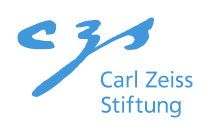The distribution of electrical energy is a challenge of the energy transition. In order to achieve a higher utilization of the grid infrastructure, a conversion to direct current is being researched in the project.
The use of direct current (DC) in distribution networks enables much higher utilization of the network infrastructure and thus reduces the resources required for network expansion. This means that for the same amount of material, significantly more energy can be distributed compared to today’s AC technology. The project will develop the technological basis for a new, fully inverter-fed distribution grid based on DC technology for urban areas, which can take over the tasks of today’s grid levels 5-7 (medium and low voltage).
6 years
Runtime
approx. 5 million euros
Funding amount
6 + 3
Departments + Faculties of the TU Ilmenau
The conversion of distribution grids to DC technology is a comprehensive socio-technical transformation that is not only technologically feasible, but must also be accepted and supported by the various stakeholder groups involved in the transformation. Accordingly, the communicative inclusion of affected stakeholder groups (grid operators, equipment manufacturers, tradesmen, population, etc.) is an important component of the project in order to develop a realistic roadmap for the transformation process. In addition to the technical issues, the communication measures required for the associated change process are also being researched.
Innovations are expected through VERNEDCT, especially in the following areas:
- New architecture and methods for distribution network operation
- Methods for optimal component utilization (increasing full load hours) through storage management and power flow control.
- Methods of fault explanation by converters and switching devices
- New inverter topologies for use in DC distribution networks
- Methods or specification for “Plug & Operate” control of inverters
- Concept of loss-minimized hybrid switchgear for continuous operation
- Transformation path with roadmaps for distribution system operator asset management,
- Technology development and communication concepts for specific target groups for transformation processes
The expected outcomes of the project are:
- a scalable target network topology for distribution networks in DC technology,
- an associated protection and operating concept,
- the selection and design of converter topologies for specific tasks in the distribution network,
- methods for inverter control as well as
- communication concepts that contribute to successful implementation of DC technology.
Funding sources
Carl Zeiss Foundation in the “Breakthroughs – Energy Systems of the Future” program
The Carl Zeiss Foundation has set itself the goal of creating scope for scientific breakthroughs. As a partner of excellent science, it supports both basic research and application-oriented research and teaching in the STEM fields (mathematics, computer science, natural sciences and technology). Founded in 1889 by the physicist and mathematician Ernst Abbe, the Carl Zeiss Foundation is one of the oldest and largest private science-promoting foundations in Germany. It is the sole owner of Carl Zeiss AG and SCHOTT AG. Its projects are financed from the dividend distributions of the two foundation companies.
